(24738 products available)


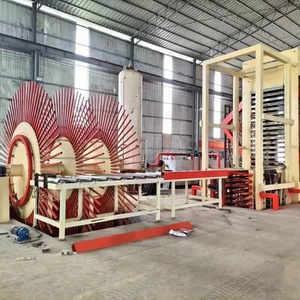

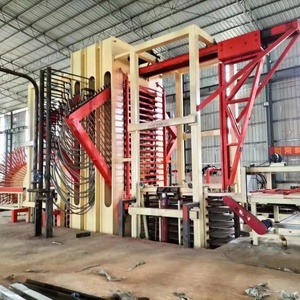











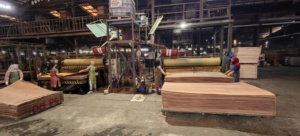
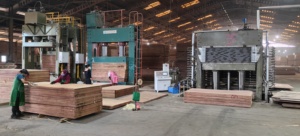

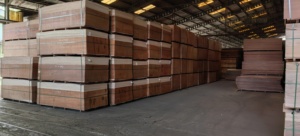

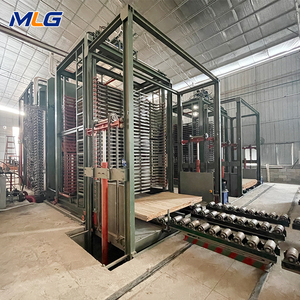
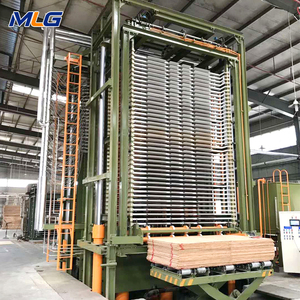
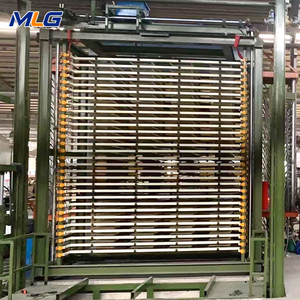














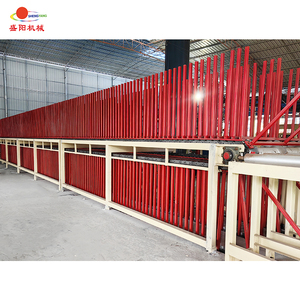
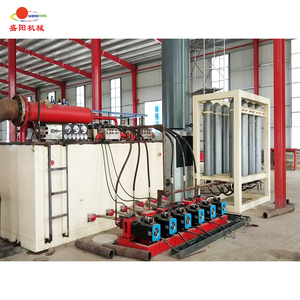
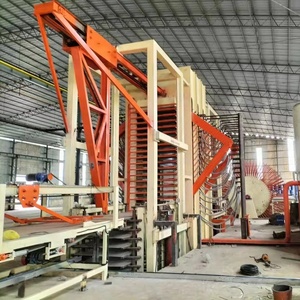
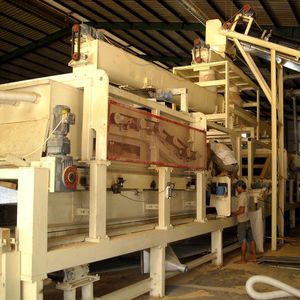







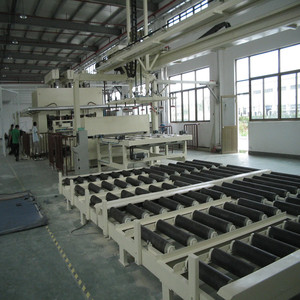

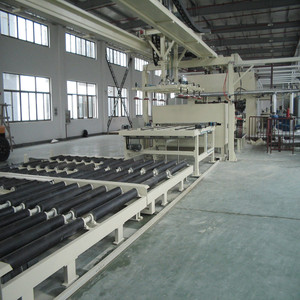


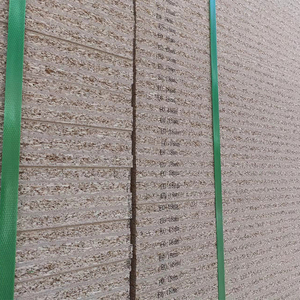



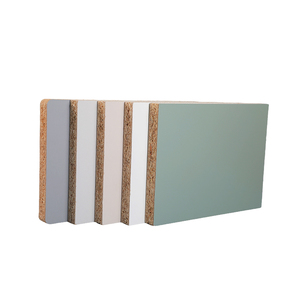

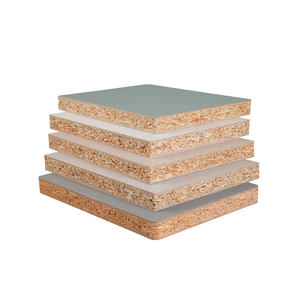


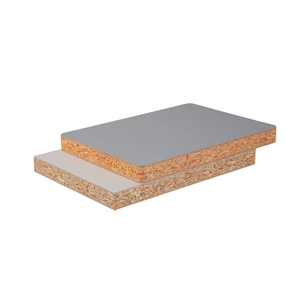


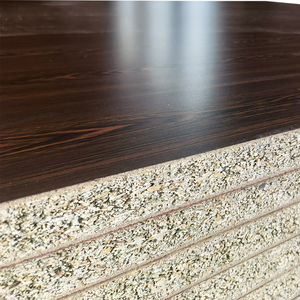

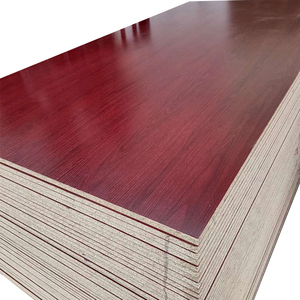
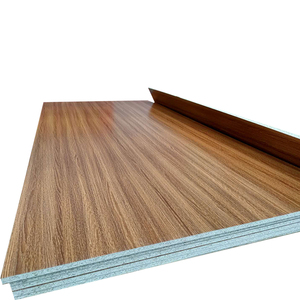







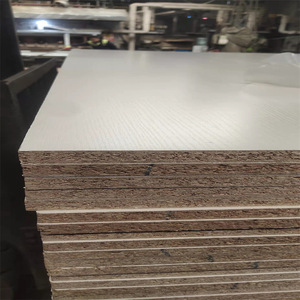
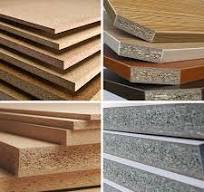
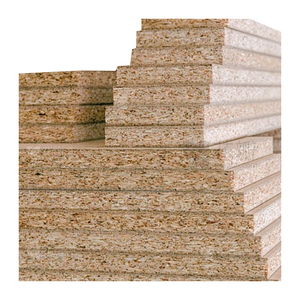

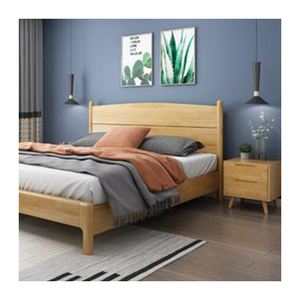
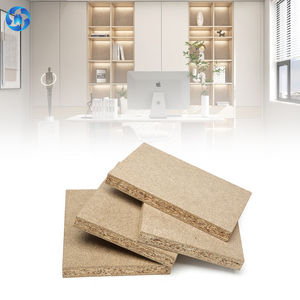

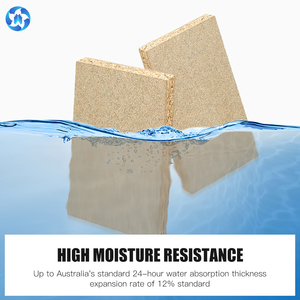


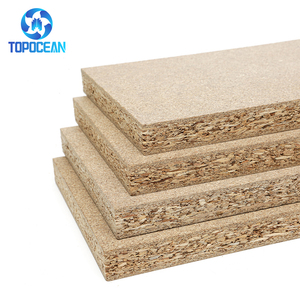

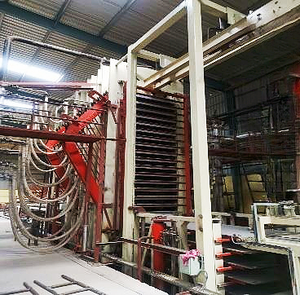

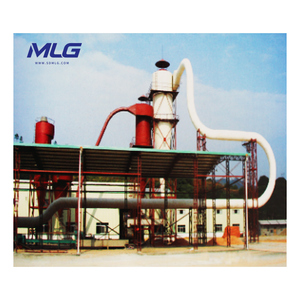
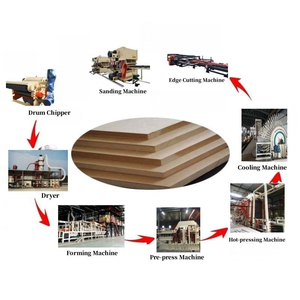
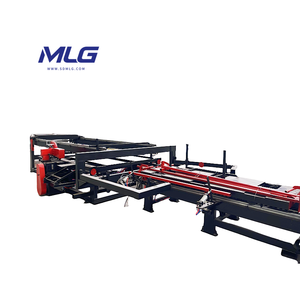
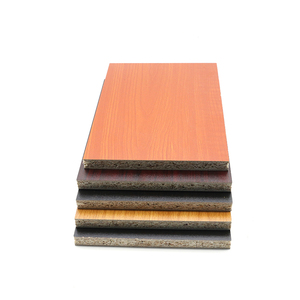

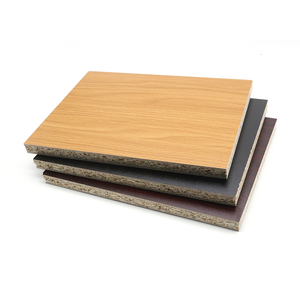


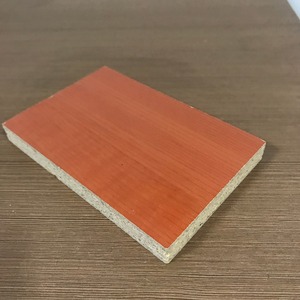













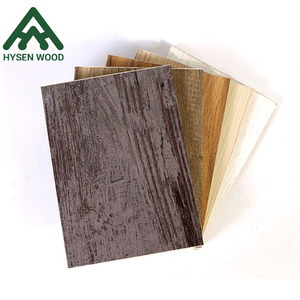



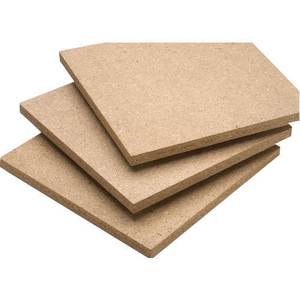


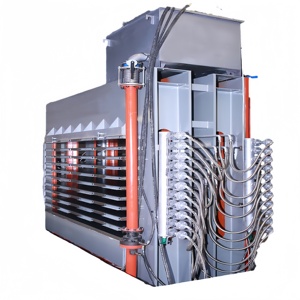







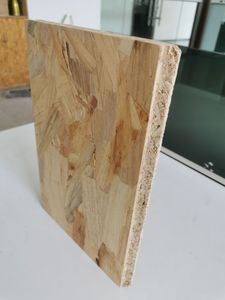
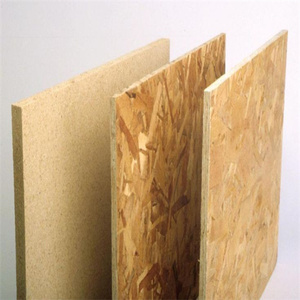

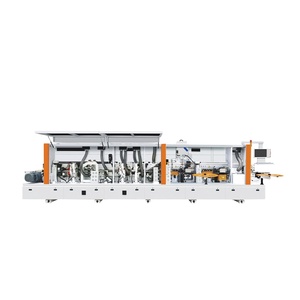




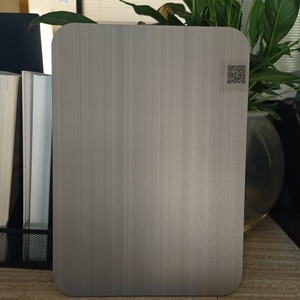

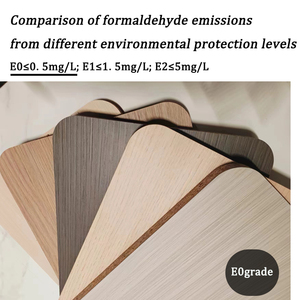














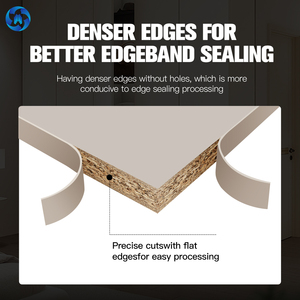






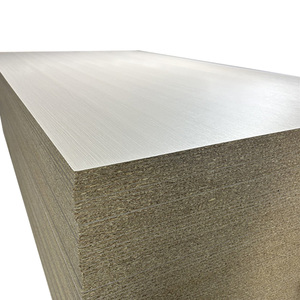




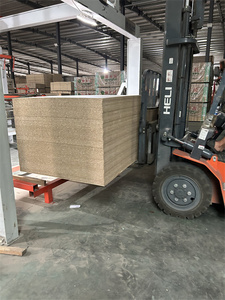

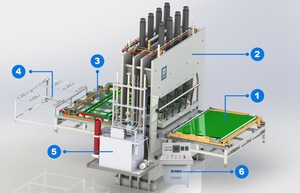









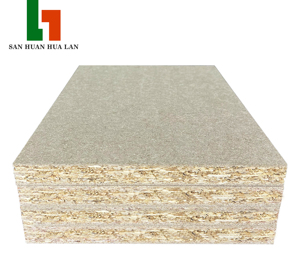


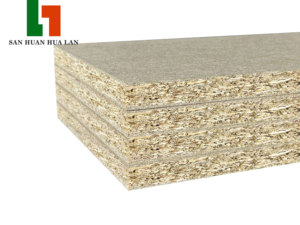

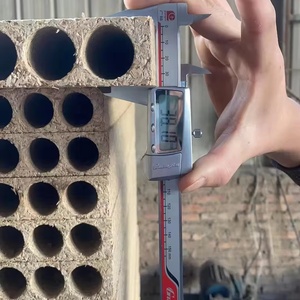
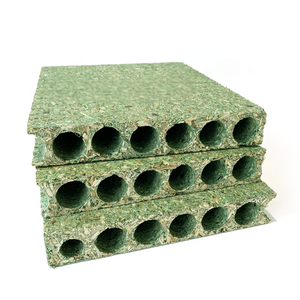







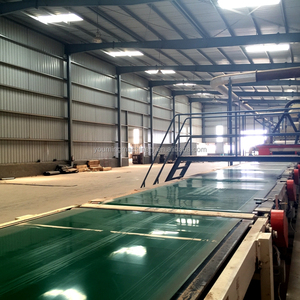








Particle board production utilizes several kinds of materials. These materials are often classified into three categories. They include wood-based materials, binders and adhesives, and added value materials.
Particle boards utilize wood-derived materials. These materials are in two main forms. They include by-products and residues from the wood processing as well as agricultural waste. Typically, these materials include sawdust, wood shavings, and chips. They also include wood husks and bark. Moreover, some manufacturers incorporate agricultural residues. These residues include corn stalks, wheat straw, and rice hulls. These materials offer an eco-friendly alternative as they use resources that are often considered waste.
Usually, particle board is produced with the application of synthetic resins as binders. Commonly, these resins include urea-formaldehyde (UF), phenol-formaldehyde (PF), and melamine-formaldehyde (MF). Normally, urea-formaldehyde is the most applied adhesive in particleboard production. This is due to its cost-effectiveness and ability to enhance board performance. In cases where moisture resistance is a priority, phenol-formaldehyde resin is favored due to its stronger adhesion properties. Also, melamine-formaldehyde resins are used for surface finishing particle boards. This improves their aesthetic properties and enhances their durability.
For particle board manufacturing some producers add value materials. These materials enhance the characteristics and performance of the particleboard. Often, these materials include fire retardants, antimicrobial additives, as well as fiberglass and mineral reinforcements. In addition, adding color pigments and mineral fillers can help improve the physical appearance of the particle board. Fire retardants are normally incorporated to increase the board's resistance to combustion. Antimicrobial additives are essential for inhibiting bacterial and fungal growth. This makes the particle board ideal for areas that require high hygiene standards, for instance in hospitals.
The production of particle board has a huge impact on the construction and furniture industries. The boards are highly valued for their affordability, versatility, and eco-friendly appeal.
Usually, particle boards are manufactured from wood residues and by-products. These include sawdust and wood shavings. Often, the use of such materials makes them a sustainable choice, therefore reducing waste. Additionally, this environmental approach are appealing to consumers who are increasingly concerned with environmental issues. In these cases, manufacturers normally source materials for particle board production locally. This minimizes transportation costs and carbon emissions.
In normal cases, the type of adhesive used in particle board production has a significant effect on the board's quality. Normally, urea-formaldehyde contributes to the board’s affordability and accessibility. However, this factor has an impact on the board’s emissions of formaldehyde. Therefore, manufacturers who are usually focused on sustainability normally opt for phenol-formaldehyde or melamine-formaldehyde resins. This is because they reduce the environmental impact in addition to improving moisture resistance.
Conventionally, particle board's surface can be veneered, laminated, or overlaid with various materials. These materials include melamine, vinyl, and laminate. Normally, this enhances the board's visual appeal. Also, it allows for customization to fit diverse design needs. Regardless of being less durable than medium-density fiberboard (MDF), particle board is still a preferred option for undercounter furniture, cabinetry, and office furniture.
The particleboard's durability is impacted by the choice of materials and binders used. Rigid boards are ideal for particle board furniture, as they are normally subjected to wear and tear. Usually, particle boards are less water-resistant compared to other engineered wood products. However, the application of moisture-resistant adhesives enhances their durability in humid environments. They include kitchens and bathrooms.
Particle board designs vary based on the intended application, aesthetics, and performance requirements. Usually, these design variations are often influenced by the type of materials used. Also, the production techniques and surface treatments play a crucial role. Below are some common design variations for particle board.
Usually, high-density particle boards are ideal for applications that require heavy load support, such as cabinets and furniture.Basically, thicker boards are normally used in flooring or as countertop bases. In these cases, they provide structural stability. On the other hand, thinner boards are suitable for doors and panels.
Typically, particle boards can be finished with a wide variety of materials. They include melamine, laminate, and vinyl. These materials not only enhance the aesthetic appeal of the particleboard but also improve its resistance to scratches, moisture, and wear. For instance, veneered particleboard provides a natural wood appearance. This makes it ideal for furniture. In contrast, laminated surfaces offer a more contemporary look with increased durability. This makes them suitable for cabinetry and commercial furniture.
Usually, edge banding is necessary for applications where particleboard's raw edges are exposed. Conventionally, banding is done using PVC, ABS, and edging that matches the surface laminate. Standardization of this helps in prevention of moisture absorption and enhances the board’s visual appeal. Sometimes, soft-forming edging is preferred for a more seamless and sophisticated appearance.
In most cases, particle boards are reinforced with mineral and fiberglass fillers. These measures enhance the board's load-carrying capabilities. In addition, advanced production techniques add these materials to the particle board. This makes them suitable for high-demand applications like flooring and worktops.
Acoustic dampening particle boards are particularly useful in residential and commercial buildings. This is because they reduce noise transmission. Just like acoustic panels, these boards are normally installed in walls, ceilings, and floors to enhance privacy and comfort. Besides, some particle boards are treated with soundproofing foams. This boosts their ability to absorb sound. Also, particle boards coated with eco-friendly materials and thermal insulators reduces energy costs. This makes them suitable for construction applications.
Particle board is highly customized for different applications. These applications include residential and commercial furniture, cabinetry, and construction. This is due to its cost-effectiveness and versatility compared to other engineered wood products. These customizations directly affect the aesthetics, structural integrity, and environmental impact of the final product.
The materials used in particle board production can be altered to meet various sustainability and performance requirements. Usually, some manufacturers use agricultural residues like wheat straw, corn stalks, or sugarcane bagasse. This practice not only reduces dependency on virgin wood resources but also lowers the carbon footprint associated with the production process. In addition, using post-consumer wood waste or sawdust remnants from manufacturing processes helps minimize landfill waste. This contributes to a more circular economy.
Customarily, the type of adhesive used in particle board production significantly impacts the board's performance. Normally, urea-formaldehyde (UF) is favored for its cost-effectiveness. However, to enhance sustainability and indoor air quality, manufacturers increasingly use alternatives like phenol-formaldehyde (PF) or soy-based adhesives. These alternatives are usually preferred due to their lower emissions and stronger resistance to moisture, making them more suitable for humid environments.
Conventionally, buyers normally request specific thicknesses, densities, and dimensions for particle boards. This is especially for their respective projects. Normally, standard thickness ranges from 15 to 25 mm, are commonly used for furniture and cabinetmaking. On the other hand, larger panels are usually required for construction applications. These applications include wall and ceiling cladding.
Ideally, particle boards can be customized with a wide range of laminates and veneers to enhance their aesthetic value. Normally, finishes like melamine, PVC, or decayed veneer allow for diverse surface textures and appearances. This makes the boards suitable for multiple design requirements. Conventionally, high-pressure laminates (HPL) are preferred in commercial applications because of their premium-quality surface that is highly resistant to wear, impact, and scratching.
Particle boards usually come with edge banding applied to exposed edges to prevent moisture infiltration and improve visual appeal. Common edge-banding materials include PVC and ABS. Normally, they are available in matched or contrasting colors to fit diverse design requirements.
To improve particle boards' durability, particularly for high-traffic areas, various upgrades are commonly applied. These upgrades include the incorporation of mineral and fiberglass reinforcements. In addition, adding fire retardants and anti-fungal agents into the mix improves the safety and lifespan of the panels. This makes them ideal for commercial use.
Conference rooms partitioning is done using plasterboards due to their numerous benefits. They include durability, energy efficiency, low maintenance, ease of installation, and sound and fire resistance. Below are some benefits of the boards.
Usually, particle board is one of the most affordable materials available for furniture and cabinetry. Also, since it is made from wood chips, sawdust, and other wood residues, it is highly economical. Therefore this makes particle board furniture a popular choice among cost-conscious consumers.
Typically, particle board is manufactured using wood residues. Normally, these materials are a waste product from other industries. This gives them a sustainable option that uses less new wood. In addition, it helps reduce waste as well as minimizes the environmental impact of deforestation.
Conventionally, particle board can be customized in a multitude of ways. For instance, they can be overlaid or veneered with melamine, laminate, or wood veneer. This allows for a wide range of appearances. Therefore, this versatility makes it suitable for diverse applications. These applications normally include kitchen cabinetry, office furniture, and retail displays.
Normally, particle board is homogeneous and consistent. This makes it easy to machine, cut, and shape during particle board manufacturing processes. Therefore, this consistency results in smooth finishes and helps minimize wear on tools. This ultimately speeds up construction and assembly.
Particle board is the most common form of manufactured wood product. It is constructed mainly by combining wood chips, sawdust, and other wood particles with a synthetic resin or adhesive and compressing the mixture under heat and pressure to create a solid board. Normally, this manufactured wood product serves a variety of purposes. These purposes usually include making furniture, flooring, and cabinetry.
Density
The typical average density of particle board is usually about 600 to 800 kilograms per cubic meter.
Moisture content
Normally, moisture content should not exceed 13% to reduce the risk of warping and ensure particleboard remains stable under normal conditions.
Load-bearing capacity
This varies widely normally based on density and thickness. Usually, higher-density boards can support heavier loads. Commonly, load-bearing particle boards have a capacity range of 50 to 150 kilograms per square meter for applications in furniture.
Thickness
This usually ranges from 15 to 30 millimeters for furniture applications.
Length and width
These measurements can be customized to specific applications. They can be as large as 2.5 meters or more in length and as wide as 1.2 meters.
Veneer options
Typically, veneer options include natural wood veneer, bamboo veneer, and reconstituted veneer. Each veneer variety usually offers a distinctive aesthetic to the particle boards.
Laminate finishes
Commonly, these finishes are available in diverse colors, patterns, and textures. They range from matte to high-gloss finishes.
Melamine coating
This is a popular surface treatment that offers a hard-wearing, scratch-resistant finish. It normally comes in solid colors as well as decorative melamine designs.
Usually, it comes in several materials. These materials include PVC, ABS, and edging that has been sent with the particleboard for consistency purposes.
Wood particles
Conventionally, particle boards are made using wood particles of heterogeneous sizes. Normally, their size ranges from 0.2 to 0.5 millimeters.
Binder types
Usually, urea-formaldehyde is the most commonly utilized. However, phenol-formaldehyde and melamine-formaldehyde are used for specific purposes. These purposes include applications in humid environments.
Alternative binders
Occasionally, some manufacturers use lignin-based or soy-based adhesives. This is often used to reduce the environmental impact of production.
Formation
Usually, the wood particles are mixed with resin, hardeners, and additives. This is followed by a formation process where the mixture is spread into mats.
Drying
Conventionally, the mats are dried to remove excess moisture. This ensures proper adhesion during pressing.
Hot pressing
This process uses high heat and pressure to compress the mat into a dense board.
Cooling
Conventionally, the board is cooled to set the resin and stabilize its structure.
Trimming and finishing
Typically, the edges are trimmed, and the board is sanded to give a smooth surface.
Waterproofing particle board usually involves applying a sealant, veneer, or laminate, which protects the board from moisture.
Particle board’s environmental impact is often lower than solid wood because it uses manufactured wood residues and wastes, which minimizes deforestation.
Typically, MDF is less eco-friendly than particle board since it uses finer wood fibers, requiring more energy and resources for production.
When adequately maintained and kept dry, particle board can last between 10 and 20 years.
Particle board's main drawbacks include its susceptibility to moisture damage, lower durability compared to plywood or MDF, and potential emission of formaldehyde unless low-emission varieties are chosen.